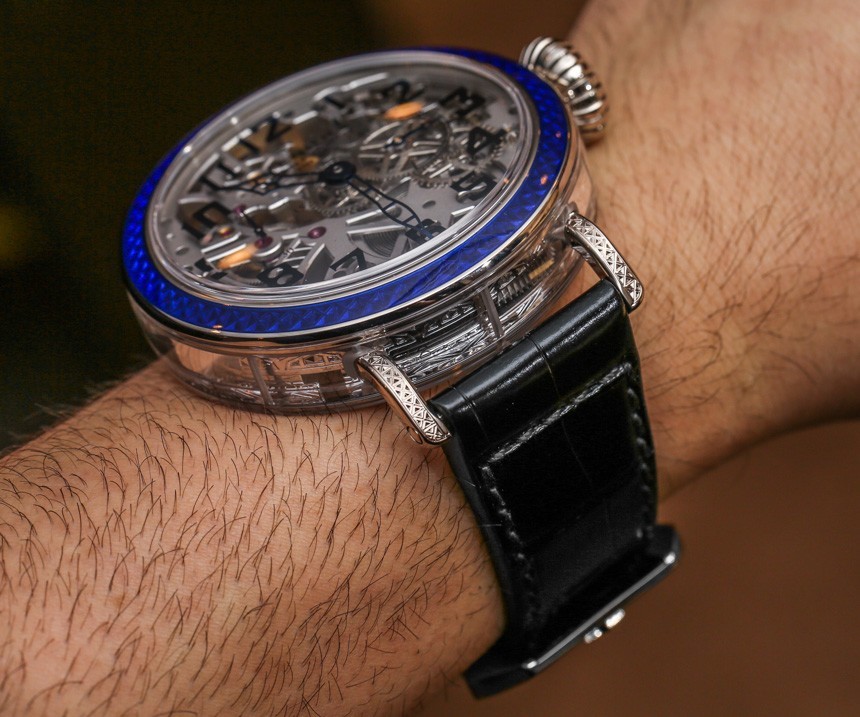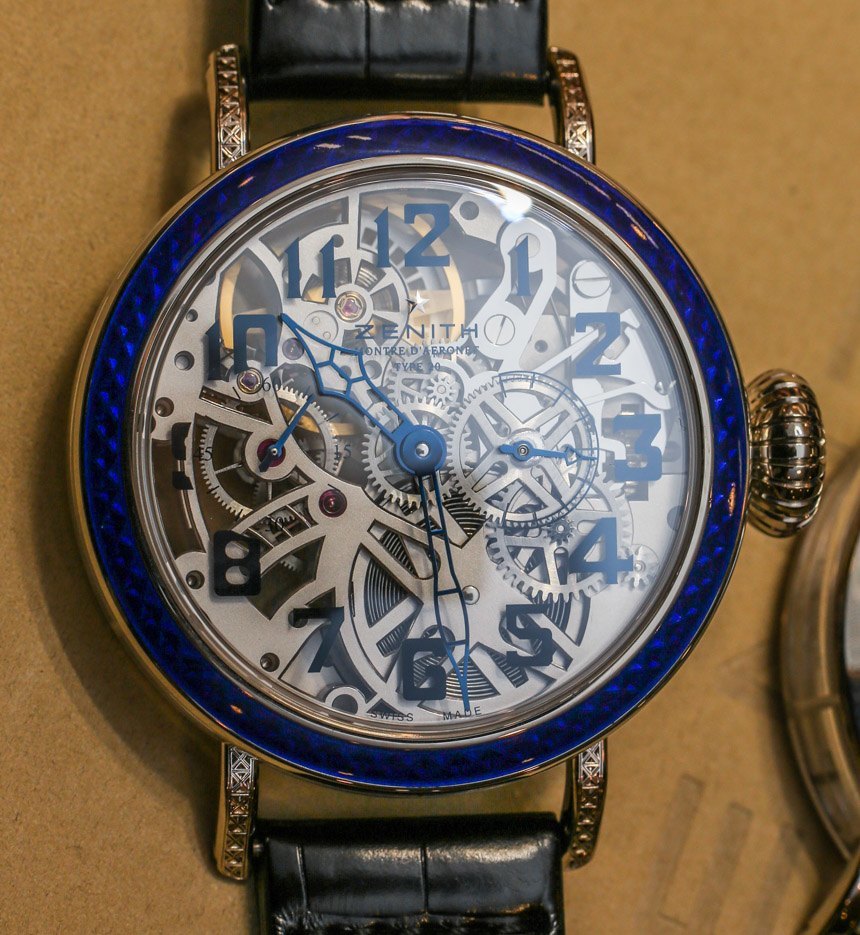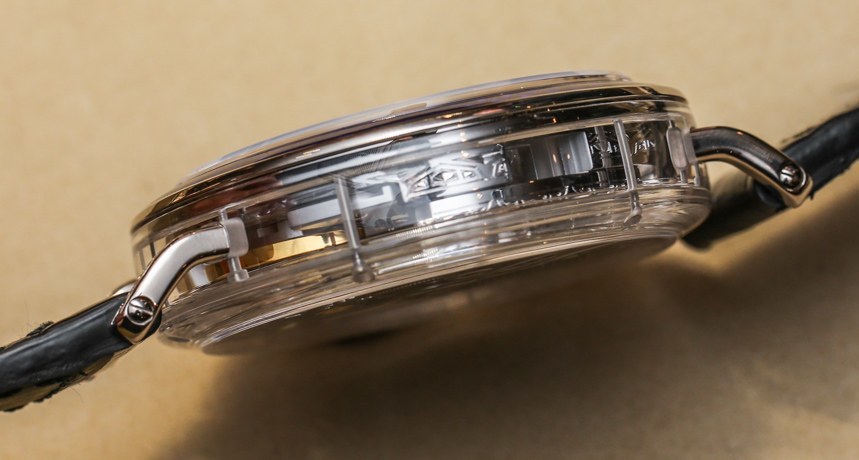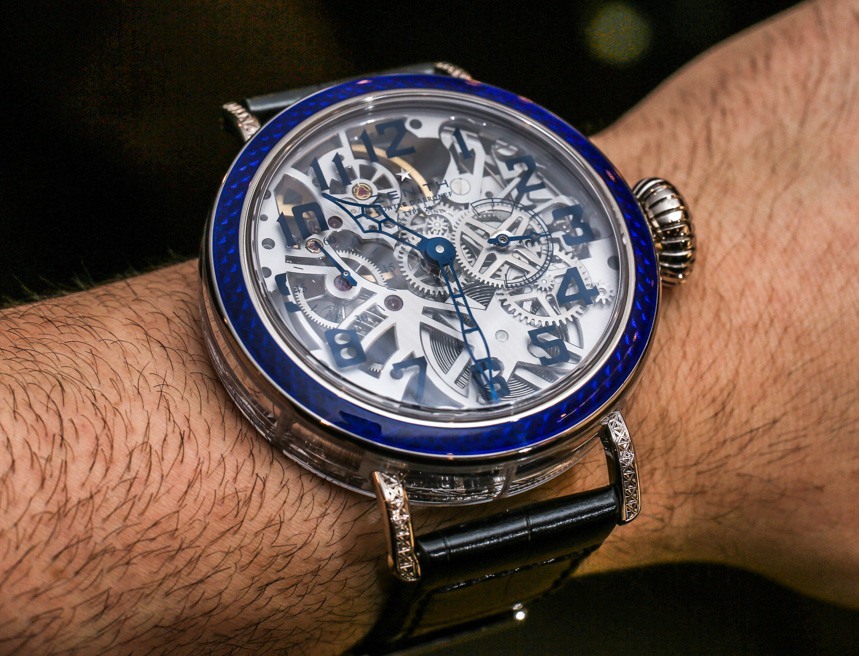
This very high-end limited edition Zenith Pilot Type 20 Squelette is the type of watch I’d want to own but not to wear. That isn’t a terribly odd thing to say, given the 60mm wide case that is arguably better looking mounted on a table or shelf in some manner, rather than looking quite literally over-sized on your wrist. That, nevertheless, is the point of the ongoing limited edition Zenith Pilot Type 20 watches that each use vintage Zenith-made caliber 5011K “competition” movements from the 1960s – which is to be super bold 60mm-wide watches with interesting movements inside. So how did the Zenith Pilot Type 20 turn into an art piece?
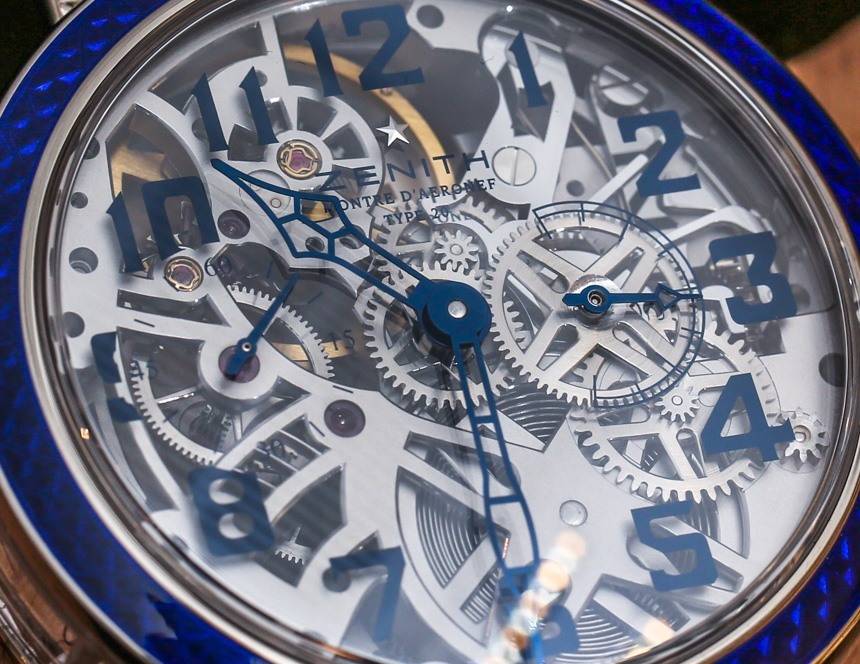
I suppose it didn’t take long before someone at Zenith decided that skeletonizing the 5011K movement was a good idea. As I’ve said before when discussing Zenith watches with the 5011K movement, Zenith has claimed that it “discovered” a stock of old 1960s-era 5011K movements that it has restored and put into some limited edition watches. What I am not clear on is whether Zenith is producing new versions of the 5011K based on its original architecture or if they quite literally have enough to go around for these and future limited editions, as well as for spare parts and repairs.
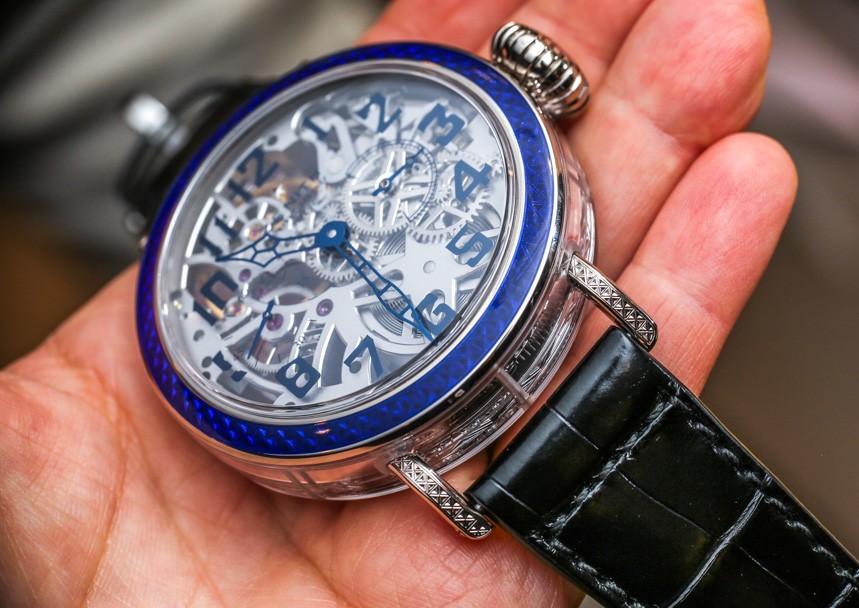
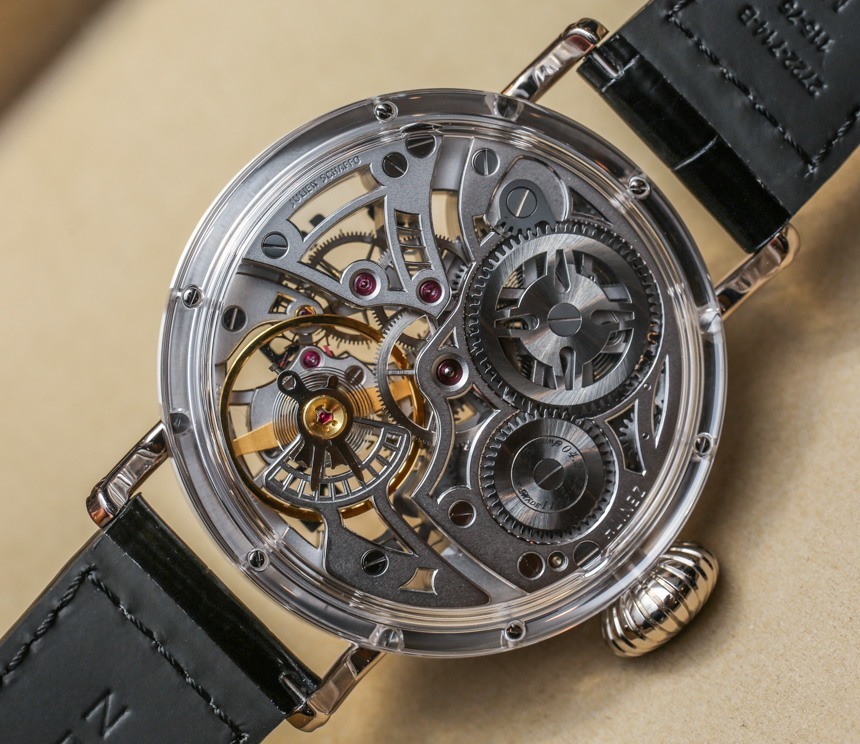
Even though the 5011K is an old movement (at least in style), Zenith decided to opt for a relatively modern skeletonization style for the Zenith Pilot Type 20 Squelette watches. The bridges are uniquely skeletonized, helping to form some original shapes. The surfaces of said bridges actually have an almost “frosted” finish, while the edges are beveled. According to Zenith, it takes 200 hours of engraving and finishing to get each of these skeletonized 5011K watch movements properly done.
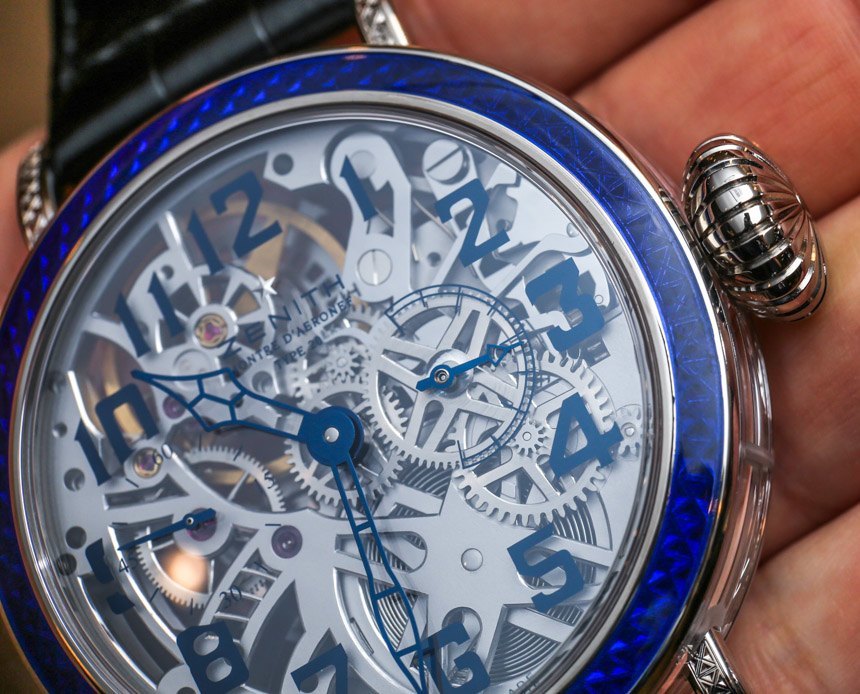
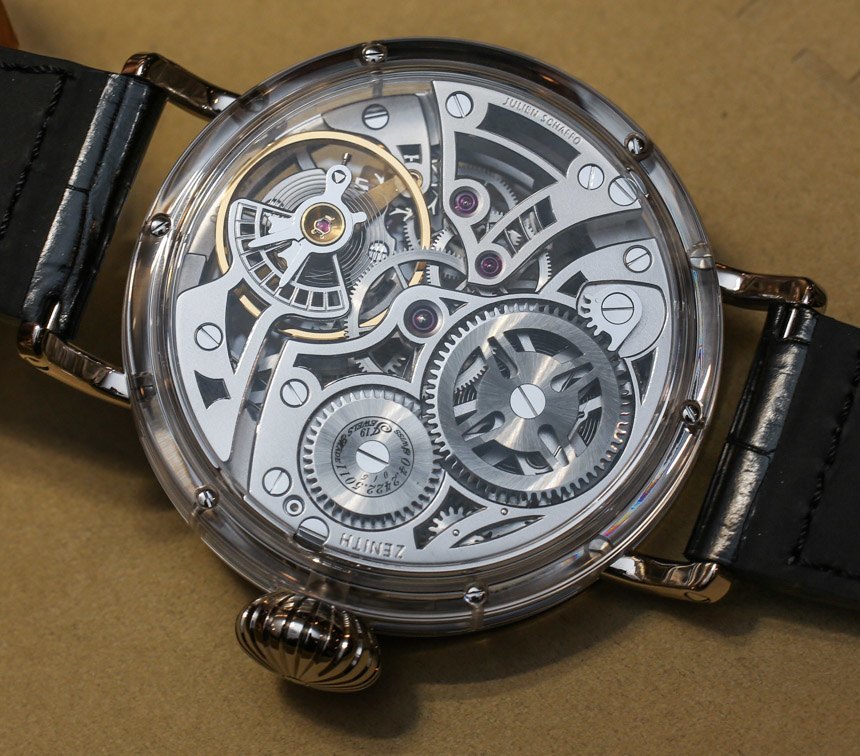
In such a large scale, the skeleton dial and movement look very cool. The 5011K movement itself is 50mm wide, so you can imagine just how interesting it might look all skeletonized within the 60mm wide case. Recall that the Zenith Pilot Type 20 Squelette case uses a sapphire crystal middle section with the rest being in 18k white gold. Thus, views into the movement ought to be rather grand – beyond the already generously sized sapphire front and back, which beautifully reveal pretty much the entire movement.
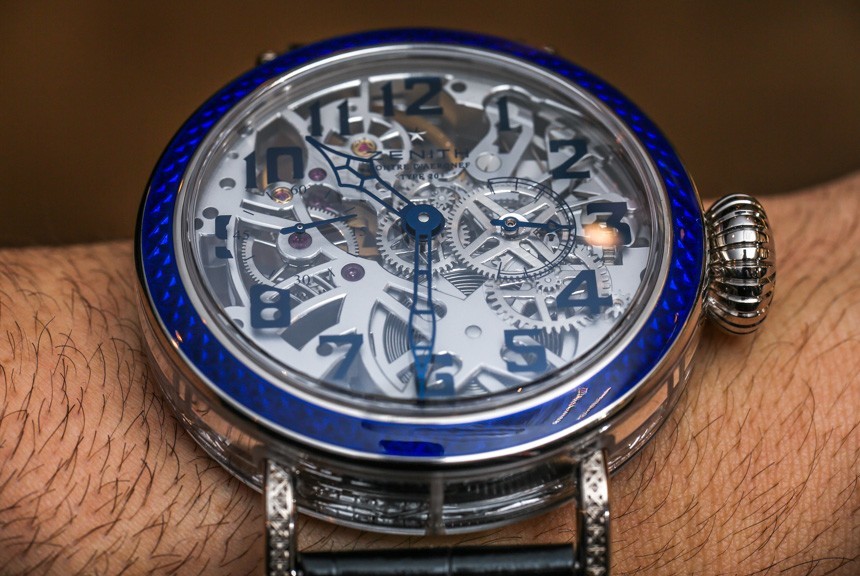
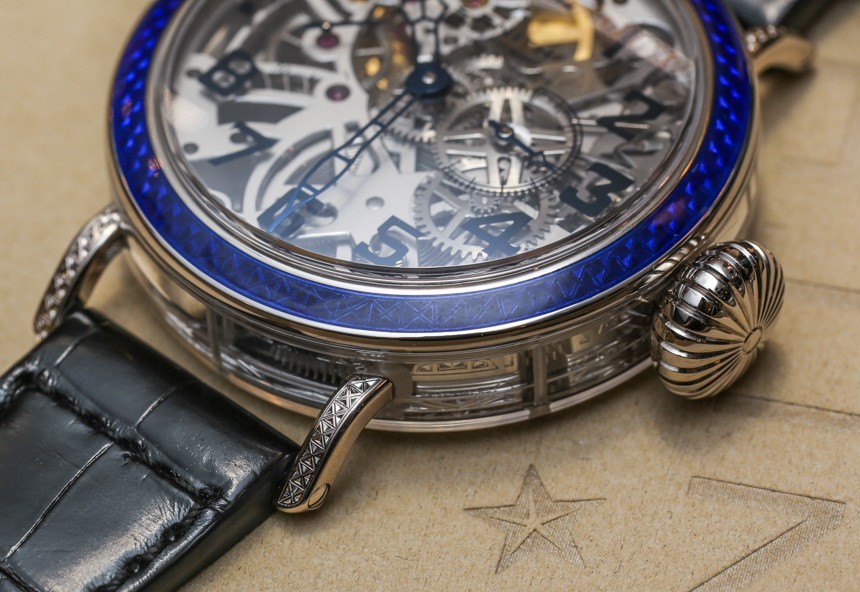
Zenith of course wanted to continue the skeleton theme to the dial, where both the hands are skeletonized and the cut-out hour markers appear to float above the dial. This is visually interesting, but I always like my watch dials to look like watch dials, and in my opinion, at least the hands didn’t need to look like blued wire frames as much. The style of the skeleton dial is aesthetically nice, but it does seriously injure legibility – which is, in a sense, quite an irony for a watch with a movement whose claim to fame was winning a chronometry competition for accuracy (even if it was back in 1967).
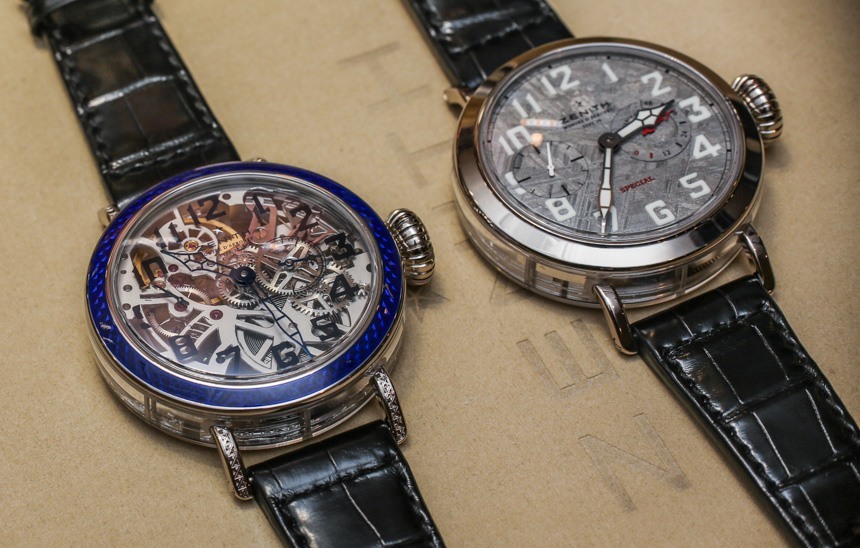
I do quite like how Zenith once again opts to engrave parts of the 18k white gold case for this limited edition Zenith Pilot Type 20 Squelette. You can see the decorative engravings on both the lugs and the bezel. The hand-engraved bezel has been further decorated with blue enamel – painted in after the engraving process and then baked for permanency. It makes for a cool look that is both unexpected but that also helps make this entire horological package complete.
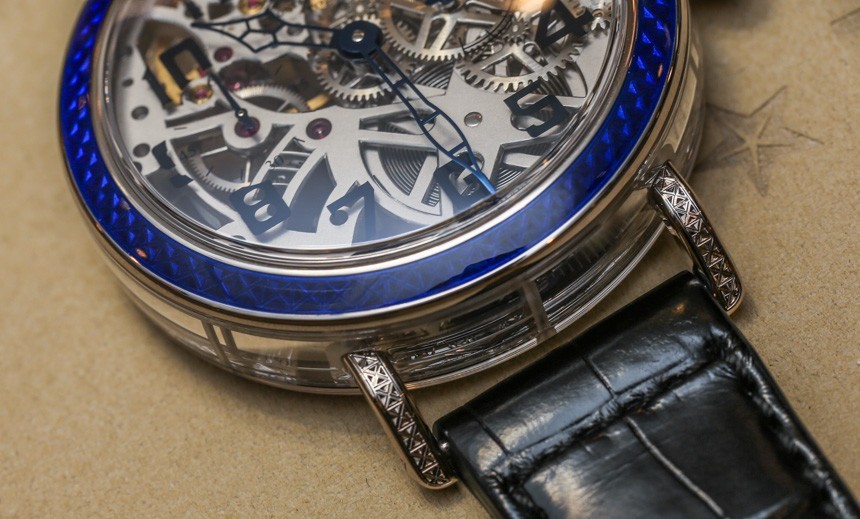
Allow me to once again give you the basics of the Zenith caliber 5011K from a technical specification perspective. The movement operates at 2.5Hz (18,000 bph) and has a power reserve of 48 hours. The dial indicates the time as well as the seconds on a subsidiary dial at 9, and the power reserve at 3. With a timepiece like this, you might have the coolest pocket watch on the block – and you can even choose to wear it on your wrist. Like the similar Zenith Pilot Type 20 Hommage A Louis Bleriot (hands-on here) which is also new for 2015, the Zenith Pilot Type 20 Squelette will be part of a limited edition of just five pieces with a price of 200,000 Swiss Francs. zenith-watches.com

